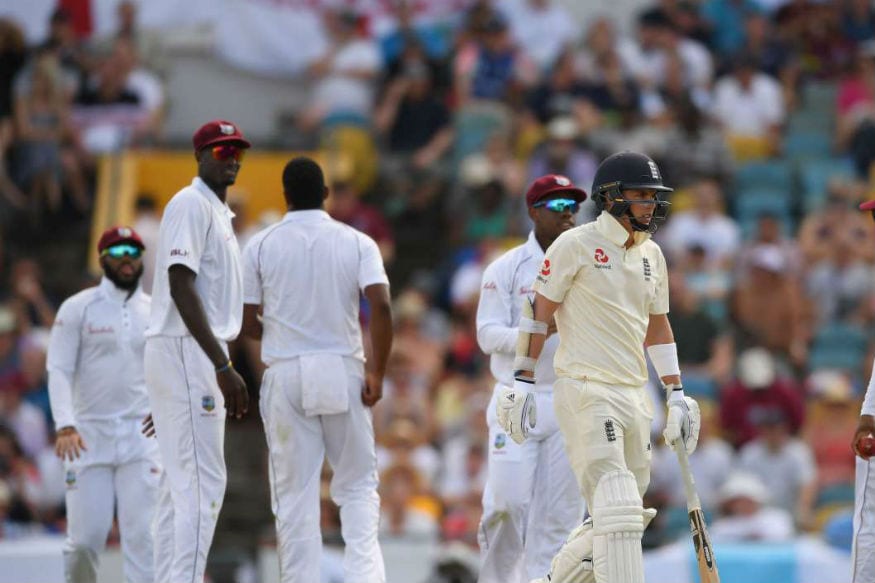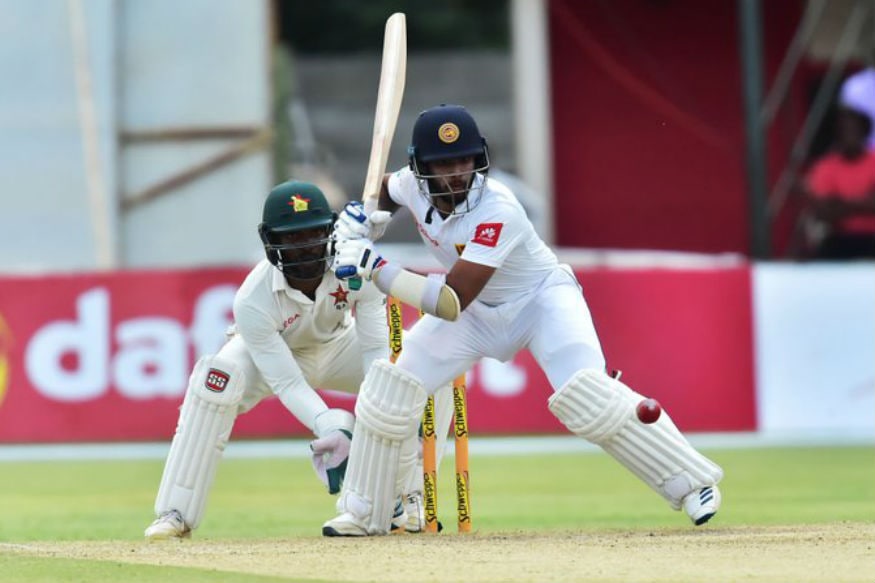 Rohan, a lawyer like his father, is expected to unite the divided factions of Delhi cricket.
Rohan, a lawyer like his father, is expected to unite the divided factions of Delhi cricket.from Top CricketNext News- News18.com https://ift.tt/2VQISRc
 Rohan, a lawyer like his father, is expected to unite the divided factions of Delhi cricket.
Rohan, a lawyer like his father, is expected to unite the divided factions of Delhi cricket. Then Australia's captain Steve Smith and Warner, who was his deputy, were handed one-year bans for their involvement in the infamous incident in the Test match against South Africa in March 2018.
Then Australia's captain Steve Smith and Warner, who was his deputy, were handed one-year bans for their involvement in the infamous incident in the Test match against South Africa in March 2018. Former Bangladesh skipper Mashrafe Mortaza has tested positive for coronavirus for the second time in a span of 15 days, according to BCB chief physician.
Former Bangladesh skipper Mashrafe Mortaza has tested positive for coronavirus for the second time in a span of 15 days, according to BCB chief physician. The former India captain has in the past expressed his reservations on the conflict-of-interest clause in the BCCI constitution saying that the current clause could end up excluding the best brains in cricket administration.
The former India captain has in the past expressed his reservations on the conflict-of-interest clause in the BCCI constitution saying that the current clause could end up excluding the best brains in cricket administration. Sourav Ganguly named three players from India's 2019 World Cup squad that he would have liked to have in his 2003 World Cup squad.
Sourav Ganguly named three players from India's 2019 World Cup squad that he would have liked to have in his 2003 World Cup squad. Cricketers in India have been posting tributes and thanks to their own mentors on social media on the occasion of Guru Purnima 2020.
Cricketers in India have been posting tributes and thanks to their own mentors on social media on the occasion of Guru Purnima 2020. The world No.1 Test bowler was bought by Kolkata Knight Riders for a record Rs 15.5 crore (AUD 3.17 million), making him the highest paid foreign player in the history of the league.
The world No.1 Test bowler was bought by Kolkata Knight Riders for a record Rs 15.5 crore (AUD 3.17 million), making him the highest paid foreign player in the history of the league. Commenting on turn of events, a former India player said that these are things that help miscreants who wish to fix games get into the picture.
Commenting on turn of events, a former India player said that these are things that help miscreants who wish to fix games get into the picture. Wisden Trophy is special for both England and West Indies, due to the history and legacy invloved. West Indies somehow manage to bring their best while playing against this opposition and have won the trophy a whopping 14 times. It is no surprise that Windies have over the years shown total domination against England. Their great, Brain Lara has highest runs (2983) in these matches, while Curtly Ambrose has most wickets -- 164.
Wisden Trophy is special for both England and West Indies, due to the history and legacy invloved. West Indies somehow manage to bring their best while playing against this opposition and have won the trophy a whopping 14 times. It is no surprise that Windies have over the years shown total domination against England. Their great, Brain Lara has highest runs (2983) in these matches, while Curtly Ambrose has most wickets -- 164. Former England captain Nasser Hussain is unsure as to whether all-rounder Ben Stokes would be a good captaincy option in the long-term.
Former England captain Nasser Hussain is unsure as to whether all-rounder Ben Stokes would be a good captaincy option in the long-term. India cricketer Krunal Pandya posted a video of the first TV interview that him and Hardik had done when both were still junior cricketers.
India cricketer Krunal Pandya posted a video of the first TV interview that him and Hardik had done when both were still junior cricketers. Former Australia spinner Brad Hogg has stated that one team that could tame India at home is Pakistan. Speaking on his Youtube channel, Hogg said that Pakistan have got a good pace attack and their batsmen can also tackle sub-continental conditions well.
Former Australia spinner Brad Hogg has stated that one team that could tame India at home is Pakistan. Speaking on his Youtube channel, Hogg said that Pakistan have got a good pace attack and their batsmen can also tackle sub-continental conditions well. BRP vs BRD Dream11 Team: Check Dream11 Prediction / BRP vs BRD Dream11 Best Picks / BRP vs BRD Dream11 Captain / BRP vs BRD Dream11 Vice Captain/ Dream11 Guru Tips / Online Cricket Tips and more
BRP vs BRD Dream11 Team: Check Dream11 Prediction / BRP vs BRD Dream11 Best Picks / BRP vs BRD Dream11 Captain / BRP vs BRD Dream11 Vice Captain/ Dream11 Guru Tips / Online Cricket Tips and more MCC vs BRG Dream11 Team: Check Dream11 Prediction / MCC vs BRG Dream11 Best Picks / MCC vs BRG Dream11 Captain / MCC vs BRG Dream11 Vice Captain/ Dream11 Guru Tips / Online Cricket Tips and more
MCC vs BRG Dream11 Team: Check Dream11 Prediction / MCC vs BRG Dream11 Best Picks / MCC vs BRG Dream11 Captain / MCC vs BRG Dream11 Vice Captain/ Dream11 Guru Tips / Online Cricket Tips and more Former Pakistan wicketkeeper Rashid Latif claimed that former India captain Mohammed Azharuddin may have played a role in the Younis Khan-Grant Flower knife episode. Flower was Pakistan's batting coach from 2014 to 2019 and had said recently that former captain Younis had once held a knife to his throat for offering him batting tips.
Former Pakistan wicketkeeper Rashid Latif claimed that former India captain Mohammed Azharuddin may have played a role in the Younis Khan-Grant Flower knife episode. Flower was Pakistan's batting coach from 2014 to 2019 and had said recently that former captain Younis had once held a knife to his throat for offering him batting tips. Former India captain M.S. Dhoni and wife Sakshi completed 10 years as husband and wife on Saturday. The pair tied the knot on July 4, 2010 in Dehradun. The wedding was done in a private ceremony and few had knowledge of the ceremony happening.
Former India captain M.S. Dhoni and wife Sakshi completed 10 years as husband and wife on Saturday. The pair tied the knot on July 4, 2010 in Dehradun. The wedding was done in a private ceremony and few had knowledge of the ceremony happening. Indian cricket team captain Virat Kohli and fast bowler Ishant Sharma left a couple of hilarious comments on Mayank Agarwal's latest Instagram post.
Indian cricket team captain Virat Kohli and fast bowler Ishant Sharma left a couple of hilarious comments on Mayank Agarwal's latest Instagram post. Sri Lanka batsman Kusal Mendis has landed himself in deep trouble after a fatal accident in Pandura. He has been arrested by the North Police, after his vehicle collided with a 64-year-old cyclist, killing the latter.
Sri Lanka batsman Kusal Mendis has landed himself in deep trouble after a fatal accident in Pandura. He has been arrested by the North Police, after his vehicle collided with a 64-year-old cyclist, killing the latter. South Africas limited-overs captain Quinton de Kock was named the men's player of the year while 21-year-old Laura Wolvaardt won the women's player of the year at Cricket South Africa's (CSA) virtual award ceremony.
South Africas limited-overs captain Quinton de Kock was named the men's player of the year while 21-year-old Laura Wolvaardt won the women's player of the year at Cricket South Africa's (CSA) virtual award ceremony. Recently, Indian all-rounder Krunal Pandya shared the first ever video interview of him and younger brother Hardik.
Recently, Indian all-rounder Krunal Pandya shared the first ever video interview of him and younger brother Hardik. Former Pakistan captain Shahid Afridi recently made a bold claim about their cricket team's head-to-head record against India.
Former Pakistan captain Shahid Afridi recently made a bold claim about their cricket team's head-to-head record against India.Lin-Manuel Miranda’s Broadway smash hit Hamilton is now on Disney Plus in the form of a theatrically-filmed recording of the production, which dramatizes the life and death of U.S. founding father Alexander Hamilton.
Beloved by critics and audiences around the world, and without a doubt one of the most successful plays ever, Hamilton tells its little known yet historically-impactful story with tons of originality and flair, boasting exceptional music, acting and production. Thanks to its incorporation of hip-hop and more modern dance styles, there’s a tremendous amount of energy coursing through the play and its an energy that rarely lets up.
In fact, according to star Lin-Manuel Miranda, if Hamilton had been written as a traditional play, it would’ve taken significantly longer to tell its story.
“It would have to be 12 hours long, because the amount of words on the bars when you’re writing a typical song — that’s maybe got 10 words per line,” he said. “Whereas here we can cram all this shit in all the margins.”
But Hamilton is not a traditional play and it packs in more words-per-minute than any other production. And if you’ve seen it, that shouldn’t come as a surprise.

FiveThirtyEight.com has crunched the numbers and found that Hamilton crams 20,520 words into its 2 hour and 23 minute runtime. And if you do the math, that works out to 144 words per minute. For comparison’s sake, the play in second place is Spring Awakening with 77 words per minute.
Of course, there are a couple of, let’s say, slower songs in Hamilton, with King George III being responsible for some of the less fast-paced tracks. And according to FiveThirtyEight, the fastest songs have nearly 200 words per minute while the slowest only have about 64 to 80 per minute.
Still, even when it slows down a bit, there’s a palpable energy that runs throughout all of Hamilton and it’s an exceptionally well produced and written production. And if you’ve never seen it, you can now find out what all the fuss is about by heading over to Disney Plus.
An awfully underrated horror movie called Splice currently ranks as the 9th most-watched film in Netflix‘s entire library today. Why is this pic attracting such massive audiences, though? Is it gaining in popularity simply for being featured on the streamer’s top 10 list, or does it possess some inherent quality that needs excavating?
Directed by Vincenzo Natali back in 2009, the film follows a group of geneticists hoping to enter the annals of history by successfully splicing together human and animal DNA and thus creating hybrid lab rats. Starring Adrien Brody alongside Sarah Polley and Delphine Chanéac, the premise alone is enough to make you feel uncomfortable and despite some mixed reviews upon release, it’s a smart, well written and at times truly terrifying flick that doesn’t get anywhere near as much credit as it deserves.
Splice belongs to a horror sub-genre known as body horror. Popularized by filmmakers like David Cronenberg, these stories see characters permanently transform into hideous creatures. Though the genre has been kept alive by contemporary titans like Rick and Morty, who parodied its style in the episode “Rick Potion #9,” its roots are actually much older.
In fact, body horror stories are pretty much as old as civilization itself. The Golden Ass, which served as a major inspiration for Disney’s The Emperor’s New Groove, tells the story of a man transforming into, well, a donkey. This particular tale was written by a dude living in the Roman Empire, and he set the trend for such stories thereafter.

It wasn’t until quite recently that bodily transformation began to be depicted as dark and twisted, though. Texts like Mary Shelley’s Frankenstein as well as Franz Kafka’s The Metamorphosis featured characters whose physical changes were rendered as nothing but grotesque. Sometimes, their unappealing appearance would reflect their rotten character. At other times, it would simply be a stroke of bad luck.
Horror movies have become increasingly popular over the course of the pandemic and according to one recent study conducted by a University of Chicago alumnus, people who like scary films are better equipped to deal with crises on a mental level than those who don’t. So, if you’re feeling stressed, watching something like Splice on Netflix may actually do you some good.